10 Most Sustainable Linen Clothing Brands: The Conscious Consumer’s Guide
Affiliate Disclosure
Hey fellow impactful ninja ?
You may have noticed that Impactful Ninja is all about providing helpful information to make a positive impact on the world and society. And that we love to link back to where we found all the information for each of our posts.
Most of these links are informational-based for you to check out their primary sources with one click.
But some of these links are so-called "affiliate links" to products that we recommend.
Why do we add these product links?
First and foremost, because we believe that they add value to you. For example, when we wrote a post about the environmental impact of long showers, we came across an EPA recommendation to use WaterSense showerheads. So we linked to where you can find them. Or, for many of our posts, we also link to our favorite books on that topic so that you can get a much more holistic overview than one single blog post could provide.
And when there is an affiliate program for these products, we sign up for it. For example, as Amazon Associates, we earn from qualifying purchases.
What do these affiliate links mean for you?
First, and most importantly, we still only recommend products that we believe add value for you.
When you buy something through one of our affiliate links, we may earn a small commission - but at no additional costs to you.
And when you buy something through a link that is not an affiliate link, we won’t receive any commission but we’ll still be happy to have helped you.
What do these affiliate links mean for us?
When we find products that we believe add value to you and the seller has an affiliate program, we sign up for it.
When you buy something through one of our affiliate links, we may earn a small commission (at no extra costs to you).
And at this point in time, all money is reinvested in sharing the most helpful content with you. This includes all operating costs for running this site and the content creation itself.
What does this mean for me personally?
You may have noticed by the way Impactful Ninja is operated that money is not the driving factor behind it. It is a passion project of mine and I love to share helpful information with you to make a positive impact on the world and society. However, it's a project in that I invest a lot of time and also quite some money.
Eventually, my dream is to one day turn this passion project into my full-time job and provide even more helpful information. But that's still a long time to go.
Stay impactful,
Amid growing concerns about the textile industry’s environmental impact, there is pressure to find greener clothes for your wardrobe. Linen clothes are a great option because linen is a natural fiber from a low-input crop that has significant environmental benefits. Unfortunately, fashion greenwashing makes it harder for you and all other consumers to figure out which linen clothing brands offer the most eco-friendly clothes. So, we had to ask: Which are the most sustainable linen clothing brands?
The most sustainable linen clothing brands include Eileen Fisher, MATE the Label, and Neu Nomads, which use low-impact materials, employ full traceability, and strive for textile circularity. In addition, People Tree and Whimsy + Row commit to fair trade practices and lower carbon footprints.
Whether you search for an elegant evening dress, a casual top, or some comfortable travel gear to add to your wardrobe without negatively impacting the soil, the water, the animals, and other people, there is a brand for you. So, let’s keep reading to learn more about the most sustainable linen clothing brands and how they ensure sustainable, ethical practices.
Here’s How Sustainable Linen Fabrics Generally Are
Linen fabrics are typically made with natural fibers from flax plants, a rain-fed crop with little need for agrochemicals. The flax crops sequester carbon and promote biodiversity.
“Sustainable: The ability to be maintained at a certain rate or level | Avoidance of the depletion of natural resources in order to maintain an ecological balance”
Oxford Dictionary
To understand the sustainability of linen, we’ve assessed the life-cycle and each stage’s sustainability. This life-cycle assessment (LCA) is a method to evaluate the environmental impacts of products and materials. Here’s a quick summary of our LCA of linen!
What makes linen so sustainable: Linen fabrics are durable and biodegradable materials made with flax fibers often grown and processed without toxic synthetic chemicals. The flax crop requires little irrigation.
Additionally: Along with fibers, flax plants also provide oil, food, and dietary supplements.
Here’s How We Selected the Most Sustainable Linen Clothing Brands
The brands on this list were chosen based on their commitment and actions to promote sustainable practices while reducing the environmental impacts of the textile industry.
They are transparent about their materials, processes, and workforce management within their supply chain.
Some brands focus their efforts on reducing waste and optimizing natural resources while others strive to reduce the carbon footprint of their clothes.
All of these brands share the commitment to reshape the textile industry toward a more sustainable and Earth-friendly sector.
These Are the 10 Most Sustainable Linen Clothing Brands
Most Sustainable Linen Clothing Brands
Overall, these linen clothing brands are sustainable. Yet, they take various approaches to reduce environmental impacts and uphold ethical standards. Let’s dive into each brand and find out more.
Eileen Fisher: A Sustainable Fashion Brand Focusing on Eco-Friendly Materials and Textile Circularity
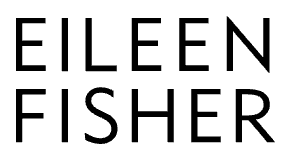
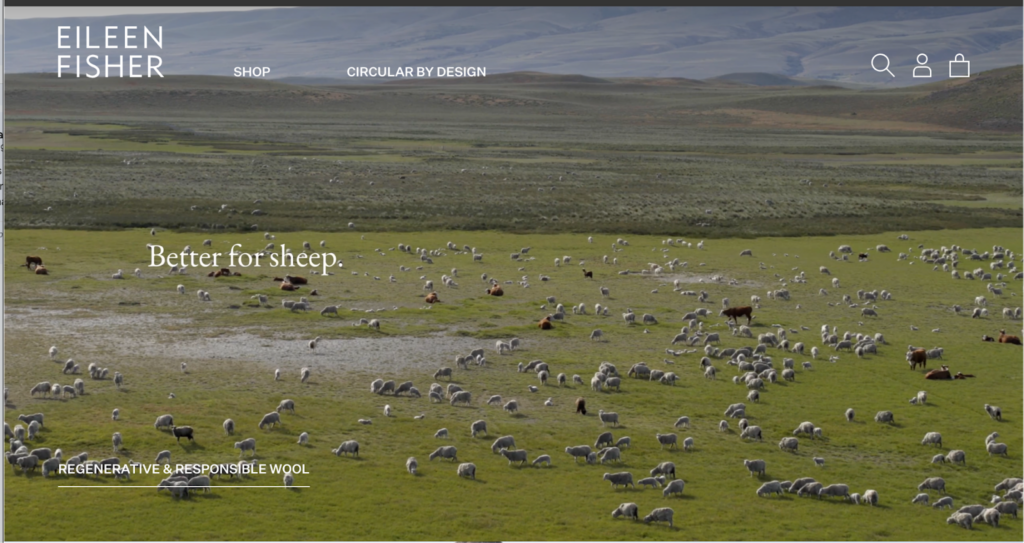
“The Biggest Thing We Can Do Is Reduce”
Eileen Fisher, founder of Eileen Fisher
🌎
How do they ensure their sustainability?
Eileen Fisher’s sustainability efforts focus on using eco-friendly materials, including organic linen and organic cotton, reducing greenhouse gas emissions generated from their operations and supply chain, reducing fabric and corporate waste, and recycling the brand’s used clothes back into new products. Their commitments to sustainable materials, circular systems, and environmentally friendly practices are demonstrated in initiatives like VISION 2020, Horizon 2030, and Renew. They are certified as a B Corporation and a Bluesign brand.
🌐
How do they ensure their ethics?
Eileen Fisher is committed to ethical practices. They have worker empowerment initiatives such as collective bargaining and the right to make a complaint. For example, their “Our Love, Peru” project supports over 450 families in and around Arequipa with higher fair trade wages and investments in the local community. Additionally, Their VISION 2020, set in 2015, tackled unethical labor practices.
🤝
Are they part of any giving-back programs?
Eileen Fisher supports many women-owned businesses. The brand has provided, since its inception, many grants for women, including the current program Supporting Women in Environmental Justice.
🛍️
What is their product range?
- Best for: elegant, classic, and casual women’s clothes
- Product range: dresses, blouses, sweaters, cardigans, pants, skirts and outerwear, shoes, accessories
- Price range: $$$
- Size range: XXS–3XL
MATE the Label: Clean From Seed to Skin

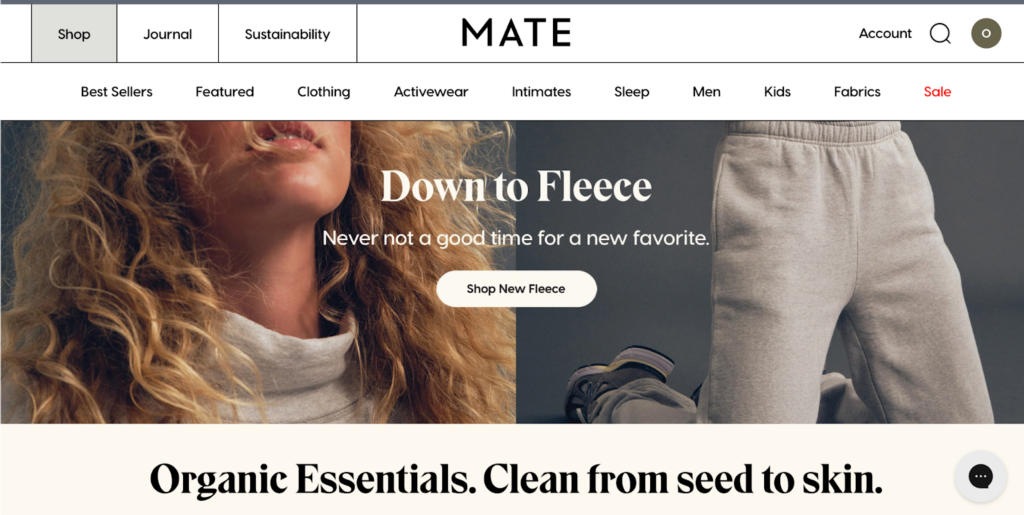
“To provide people everywhere with essentials that are clean from seed to skin.”
MATE the Label
🌎
How do they ensure their sustainability?
MATE the Label ensures sustainability by sourcing low-impact natural materials, reducing carbon footprints, and recycling. They opt for plant-based yarns and non-toxic dyes. At least 50% of their clothing items are made with organic or recycled plant fibers. They manufacture locally (within 15 miles of their office) to reduce transportation emissions. The brand diverts their textile waste (pre- and post-consumer) into making new products. They have B Corporation and Climate Neutral certifications.
🌐
How do they ensure their ethics?
MATE the Label has a Code of Conduct covering some ILO Four Fundamental Freedoms principles. Specifically, they do final production in US factories where they had banned, since day 1, the piece rate pay—a practice that often leads to wages below minimum wage and unsafe working conditions. They commit to creating safe, comfortable, and fair working environments for everyone in their supply chain, including farmers, garment workers, and recyclers. They also make regular visits to their suppliers.
🤝
Are they part of any giving-back programs?
In 2021, MATE the Label donated 1% of sales to nonprofit partners that are committed to saving the planet. On Giving Tuesday in 2021, they upped the donation from 1% of every purchase to 5%. Since their partnership with BEAM Impact, MATE the Label’s consumers can choose to which organization the donations of their order should go to.
🛍️
What is their product range?
- Best for: minimalistic, versatile clothes for women
- Product range: sweaters, dresses, pants, hoodies, sweatshirts, maternity, blouses, T-shirts, jumpsuits, underwear
- Price range: $$
- Size range: XS–XL
Neu Nomads: An Ethic-First Brand With a Commitment to Sustainability and Traceability
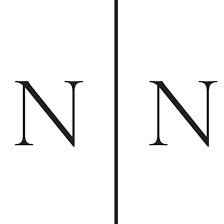
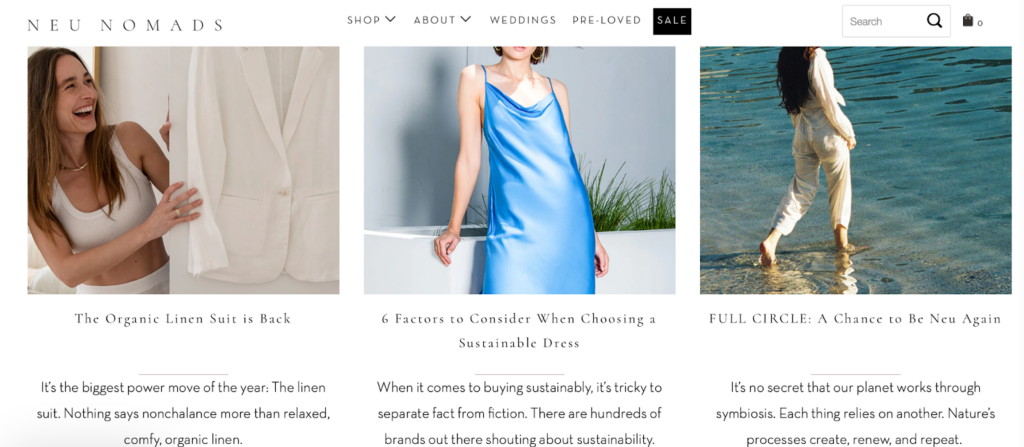
“We always consider how to create something beautiful with the lowest possible impact on the world.”
Karen Wood, founder of Neu Nomads
🌎
How do they ensure their sustainability?
Neu Nomads prioritizes sustainability by opting for eco-friendly materials, using renewable energy in its supply chain, and reducing waste with a platform to resell and reuse pre-loved clothes. Their biodegradable, plant-based fabrics include linen, certified organic cotton, and TENCEL™. Their factory in India is powered by solar energy, with all the excess energy directed back to the local community. Water used for dying fabrics is captured, purified, and processed using non-toxic and AZO-free dyes. Nearly 90% of the water used during dyeing is recycled in a common effluent treatment plant.
🌐
How do they ensure their ethics?
Neu Nomads ensures their ethics through fair labor practices and transparent supply chains. They make regular inspection visits to their suppliers. 85% of their garments are produced in a family-owned factory in Delhi that maintains healthy working conditions, health care benefits, and compensation far above the living wage.
🤝
Are they part of any giving-back programs?
Neu Nomads is not known to be part of any giving-back programs.
🛍️
What is their product range?
- Best for: luxurious essential clothing items for female modern travelers
- Product range: shirts, scarves, dresses, pants, jackets, blazers, knitwear, tops, blouses, T-shirts, lingerie
- Price range: $$$
- Size range: XXS–XXL
People Tree: The Pioneer to Fair Trade Fashion
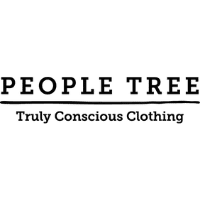
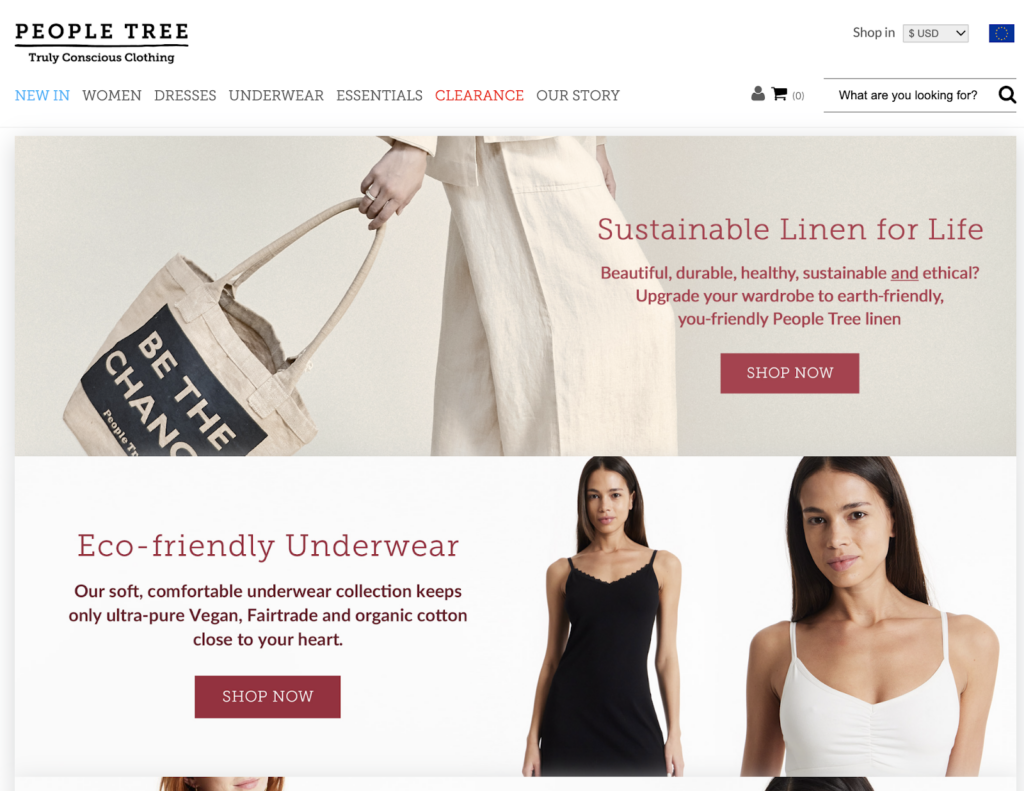
“ We build awareness to empower customers and producers to participate in Fair Trade and environmentally sustainable solutions.”
People Tree
🌎
How do they ensure their sustainability?
People Tree ensures sustainability by opting for low-impact materials, processes, and techniques. They only use natural fabrics made with low-impact fibers such as linen and GOTS-certified organic cotton or semi-natural/ semi-synthetic fabrics that follow closed-loop processes (such as TENCEL™). The brand uses low-waste cutting techniques to maximize fabric use. Their packaging is recyclable.
🌐
How do they ensure their ethics?
People Tree put fair trade and ethical production practices at the core of the brand. They are a pioneer of fair trade fashion, guaranteeing better prices, decent working conditions, local sustainability, and fair terms of trade for farmers and workers in the Global South. They are also a member of the World Fair Trade Organization, which works on the 10 Principles of Fair Trade, including opportunities for disadvantaged producers and commitment to no child labor or forced labor.
🤝
Are they part of any giving-back programs?
People Tree is actively involved in initiatives to improve access to education for adults and children in the most vulnerable communities and programs that support people with disabilities and disadvantages. They also campaign for fair trade, sustainability, and social justice.
🛍️
What is their product range?
- Best for: womenswear
- Product range: skirts, dresses, pants, tops, blouses, jumpsuits, socks, underwear
- Price range: $$
- Size range: S–XL
Whimsy + Row: Reducing Eco-Footprint With Every Step of the Process
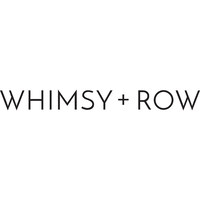
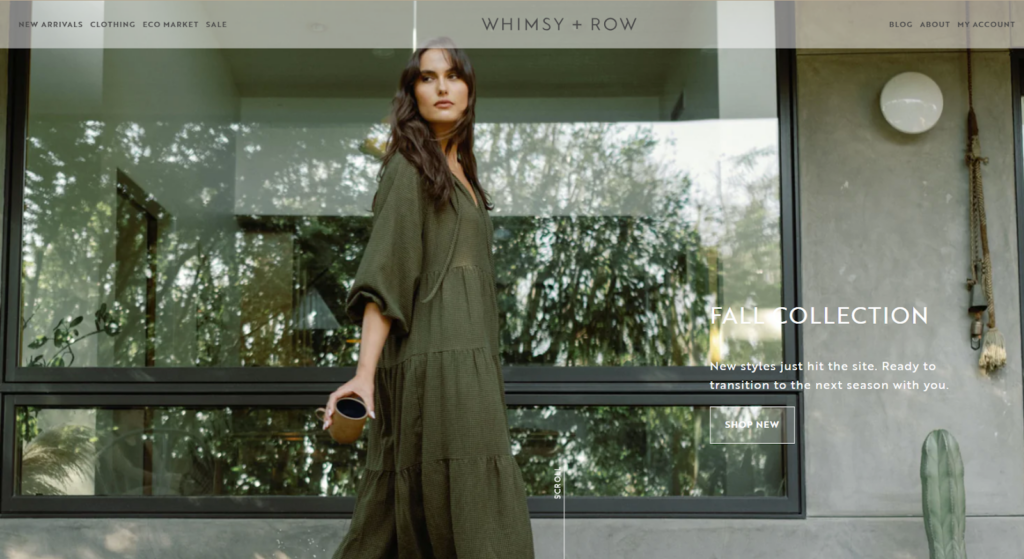
“Growing and being a good company.”
Rachel Temko, founder of Whimsy + Row
🌎
How do they ensure their sustainability?
Whimsy + Row prioritizes sustainability by opting for low-impact materials like certified organic cotton, linen, TENCEL™, and deadstock/upcycled fabrics. Their clothes are made with low-impact dyes and recycled water. They reduce waste through their small-batch production of long-lasting products and efforts to close the loop to reach zero waste. The final stages of manufacturing are done locally to reduce the transportation footprint. They further offset their carbon emission with the Carbon Fund. Whimsy + Row is carbon neutral.
🌐
How do they ensure their ethics?
Whimsy + Row clothing is made within a few miles of their office, enabling weekly factory visits. The brand ensures that fair wages are given and that workers are being treated fairly.
🤝
Are they part of any giving-back programs?
Whimsy + Row actively participate in giving-back programs that support environmental causes and community initiatives. Specifically, they donate money to organizations like One Tree Planted, People Tree, Global Fund for Women, Black Lives Matter, Reclaim the Block, Black Vision Collective, Downtown Women’s Health Center, and Feeding America. Once a month, their employees also donate their time to community work, such as cleaning the beach or planting trees.
🛍️
What is their product range?
- Best for: womenswear with eco-friendly, contemporary designs
- Product range: skirts, denim, dresses, pants, tops, blouses, shorts, lingerie, plus-size
- Price range: $$$
- Size range: XS–3XL
ASKET: Timeless Clothes Made Under Full Transparency and With Life-Cycle Responsibility
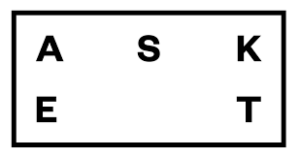
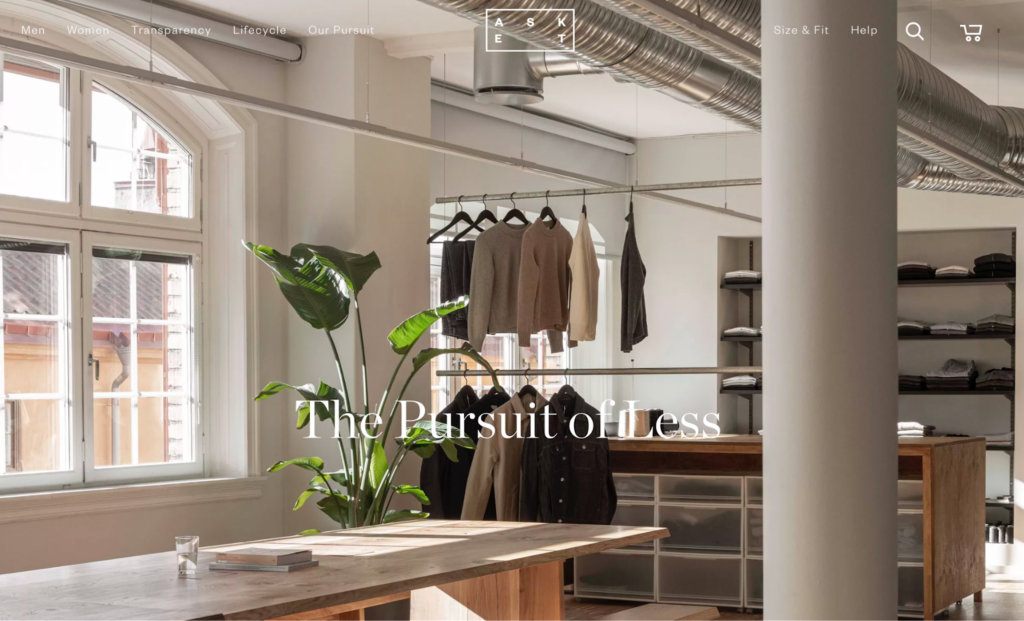
“Our mission is to end overconsumption and restore value to the clothing industry.”
Jakob Dworsky, founder of ASKET
🌎
How do they ensure their sustainability?
ASKET ensures sustainability by reducing waste and using less energy throughout the life-cycle of their garments. They tackle the textile waste problem with their Repair Program that helps keep clothes last longer and their Revival Program that diverts used garments from landfills to be repaired, renewed, resold, or recycled. ASKET also runs a Care Program, helping consumers keep their garments fresh longer while using less energy, lowering the environmental impact of the usage stage. In an effort to encourage consumers to buy and waste less, they are fully transparent about the environmental impact of their clothes.
🌐
How do they ensure their ethics?
ASKET maintains ethics through fair labor practices, responsible sourcing, and a commitment to transparency in their supply chain. In 2022, their average traceability score across their entire collection was 96.0%.
🤝
Are they part of any giving-back programs?
ASKET is not known to be part of any giving-back programs.
🛍️
What is their product range?
- Best for: high-quality, essential, versatile wardrobe pieces
- Product range: tops, sweaters, pants, chinos, jackets, coats, socks, underwear
- Price range: $$$
- Size range: XS–XXL
Bhumi: Fully Transparent and Ethical Textile From a Carbon-Neutral Brand


“We encourage you to make thoughtful consumer purchases.”
Bhumi
🌎
How do they ensure their sustainability?
Bhumi prioritizes sustainability through eco-friendly materials, low-impact processes, and water-saving initiatives. At least 50% of their fabrics, including organic linen and organic cotton, are certified by GOTS and Fairtrade. 100% of their products are free of harmful chemicals, pesticides, and GMOs. They capture rainwater to lower water use in their supply chain. Using the Green Story’s Carbon Registry, they measure, reduce, and offset the carbon emissions occurring in making and delivering Bhumi products.
🌐
How do they ensure their ethics?
Bhumi puts ethics at the core of their operations. Most of the band’s supply chain is certified by Fairtrade International – Small Producers Organisations and Global Organic Textile Standard (GOTS), which ensures worker welfare and fair labor practices. They have established an end-to-end system working directly with family-owned farms and factories to ensure traceability at every step. The brand promotes ethical consumerism by advocating for conscious purchasing decisions and awareness of the origins of clothing.
🤝
Are they part of any giving-back programs?
Bhumi supports and partners with people, groups, and projects that are activists for change. Specifically, they participate in numerous giving-back environmental programs supporting nature conservation, climate action, and reforestation.
🛍️
What is their product range?
- Best for: kidswear, menswear, womenswear
- Product range: knitwear, sleepwear, tops, blouses, shorts, underwear
- Price range: $$$
- Size range: XS–XL
Beaumont Organic: Create “Contemporary Conscious Clothing” Responsibly

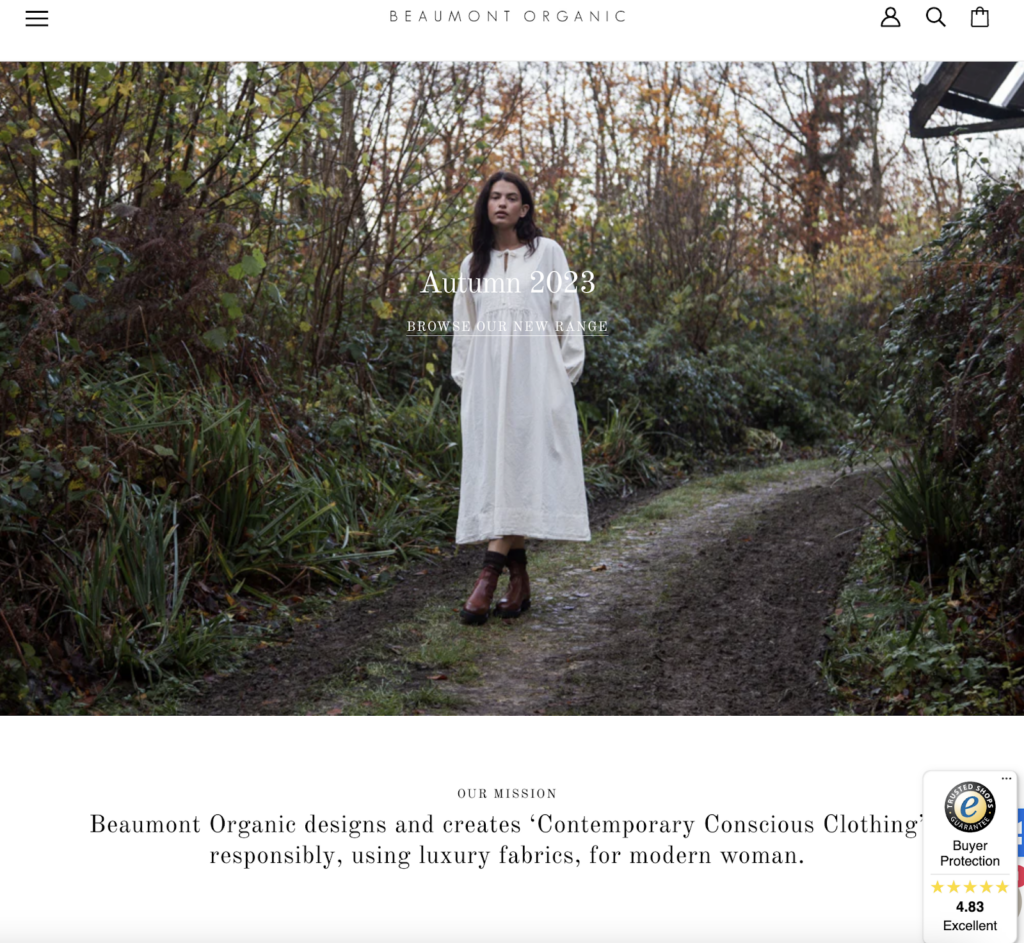
“We work hard behind the scene to provide you with full transparency into the sustainability of our practices and our suppliers”
Beaumont Organic
🌎
How do they ensure their sustainability?
Beaumont Organic prioritizes sustainability by sourcing organic and eco-friendly materials, using renewable energy in its supply chain, and reducing waste by using recycled packaging and offering clothes repairs. Additionally, they promote textile circularity with their online circular resale scheme, allowing customers to pass their pre-loved garments onto a new home. The brand features GOTS-certified organic cotton, organic linen, TENCEL™, and recycled fabrics.
🌐
How do they ensure their ethics?
Beaumont Organic is fully transparent about the final stage of their clothes: European factories that pay fair wages and have good working conditions. Beaumont Organic uses wool accredited by the Responsible Wool Standard, guaranteeing the welfare of the animals in their supply chain.
🤝
Are they part of any giving-back programs?
The Beaumont Organic Foundation has supported various community give-back projects in Fiji, including hospital renovations.
🛍️
What is their product range?
- Best for: womenswear, baby wear, homeware, accessories
- Product range: shirts, pants, jackets, blazers, knitwear, blouses, underwear
- Price range: $$$
- Size range: XS–XXL
Linenfox: Made-to-Order Clothes Using Highly Sustainable Materials


“We create long-lasting, sustainable pieces that could be affordable for many women out there who seek value and quality.”
Linenfox
🌎
How do they ensure their sustainability?
Linenfox promotes sustainability by specializing in linen, in consideration of its biodegradable and eco-friendly nature. The linen fabrics used in their clothing are toxic-free and OEKO-TEX® certified. They also use recycled materials, such as recycled wool, in their linen wool blend. They avoid unnecessary waste by running a make-to-order system, meaning no garments are left waiting on the shelf. With such a system, they encourage more sustainable clothes shopping where consumers can set boundaries and slow down the pace instead of overconsuming.
🌐
How do they ensure their ethics?
Linenfox produce their products in Lithuania, where they house a small team of 26 valued professionals who are paid according to fair trade principles.
🤝
Are they part of any giving-back programs?
Linenfox is not known to be part of any giving-back programs.
🛍️
What is their product range?
- Best for: womenswear
- Product range: shirts, skirts, dresses, pants, jackets, blazers, maternity clothing, tops, blouses, jumpsuits, playsuits
- Price range: $$
- Size range: XS–XXL
MagicLinen: Made-to-Order Linen Clothing With a Focus on Sustainability and Longevity


“Our commitment to doing no harm is of utmost importance to us”
Vita Murauskiene, founder of MagicLinen
🌎
How do they ensure their sustainability?
MagicLinen upholds sustainability by specializing in linen, as it is an environmentally friendly material harvested from flax plants, which requires minimal water and pesticides. Their linen fabrics are OEKO-TEX® certified, meaning they are free from harmful substances and chemicals. The brand also minimizes waste by offering made-to-order items and repurposing most of the textile leftovers for small items. They use either compostable bio-based polymer or reusable custom linen dust bags for their primary packaging.
🌐
How do they ensure their ethics?
MagicLinen produces their linen clothing in Lithuania, an EU member country upholding the group standards about fair wages and safe working conditions. Additionally, MagicLinen partners with third-party agencies to conduct regular ethical audits.
🤝
Are they part of any giving-back programs?
MagicLinen continuously supports local communities and occasionally drives new social initiatives. Their team members also volunteer in different organizations.
🛍️
What is their product range?
- Best for: kidswear, menswear, womenswear
- Product range: shirts, skirts, pants, shorts, jumpsuits, loungewear
- Price range: $$
- Size range: XS–XXL
Linen Fabrics: Durable, Breathable Materials Often Cultivated Without Toxic Synthetic Chemicals
Linen fabrics are typically made with natural fibers from flax plants that are often cultivated without toxic synthetic chemicals. The flax crops sequester carbon and promote biodiversity while requiring little or no irrigation. There are also linen fabrics made from bamboo (bamboo linen).
Here are the life-cycle stages of linen fabrics and each stage’s sustainability assessment:
- Growing of flax plants: A flax field has high carbon sequestration potential and harbors rich biodiversity. Flax is a rainfed, versatile crop with a relatively short rotation (100 days). Flax plants can provide good fiber yields without toxic synthetic chemicals.
- Manufacturing of linen fabrics: Linen fabrics production doesn’t involve harmful synthetic chemicals. The mechanical processes to produce organic linen can be labor-intensive and energy-demanding.
- Transportation of linen fabrics: Linen fabrics typically travel from flax fields to factories, then sorting centers, shops, and consumer’s houses before going to recycling centers or landfills. The GHG emissions associated with transporting vehicles could be significant.
- Usage of linen fabrics: Linen fabrics are breathable. They don’t need to be washed too frequently, which saves water and energy. Flax fibers are relatively durable; compared to cotton, they are stronger and more sunlight-resistant. This means materials made with flax fibers can last for a long time before a replacement is needed, thus making them more sustainable.
- End-of-life of linen fabrics: The end-of-life stage for linen is sustainable because the fiber is biodegradable and compostable.
Linen fabrics are among the most sustainable textile materials. They are durable and biodegradable materials made from natural fibers. The flax crop—which provides raw materials for linen fabrics—is a versatile rainfed crop and can be easily cultivated without toxic synthetic agrochemicals.
Why Is It Important to Buy Products Made of More Sustainable Fabrics
It is important to buy products made from more sustainable fabrics because a sustainable textile industry has a lower carbon footprint, helps save natural resources, and is better for forests, animals, and humans alike.
Buying Sustainable Fabrics Reduces Your Carbon Footprint
The production of clothing and footwear is estimated to contribute 10% of global greenhouse gas emissions—more than all international flights and shipping combined. If the fashion industry were a country, it would be the fourth largest emitter of carbon dioxide.
One way to reduce the carbon footprint of the clothes you buy is to opt for sustainable fabrics. Sustainable fabrics, which are often made with natural or recycled fibers, have relatively low carbon footprints compared to petroleum-based fabrics. For example, organic cotton made in the US has a carbon footprint of 2.35 kg CO2 (per ton of spun fiber)—a quarter of polyester’s carbon footprint.
Buying Sustainable Fabrics Reduces Demand for Natural Resources and Waste Management
The textile industry uses water and land to grow cotton and other fibers. It is estimated that 79 billion cubic meters of water were used for the sector worldwide in 2015. For example, producing a single cotton T-shirt requires as much water as one person drinks for 2.5 years (2,700 liters of fresh water).
Worse yet, the textile economy is vastly more linear than circular: the largest amount of resources used in clothes ended up in landfills (instead of being recycled to remake clothes). According to a report by the Ellen MacArthur Foundation,
- Less than 3% of materials used in the textile economy in 2015 came from recycled sources.
- In other words, more than 97% of resources used in making clothes are newly extracted.
When clothing items are disposed of within a short period of time—under a year in the case of half of the fast fashion clothes—the natural systems that provide raw materials for fabrics don’t have enough time to recover and regenerate, which could lead to ecological breakdown.
Sustainable fabrics are made with less water and emissions while lasting longer:
- Because they are durable, you don’t need to buy new clothes too often.
- Thus, you help reduce the pressure to extract more resources for making new items.
Similarly, making and consuming sustainable fabrics made with recycled materials reduces the demand for virgin materials while helping tackle waste management.
Buying Sustainable Fabrics Encourages Sustainable Management of Forests
Sustainable plant-based fabrics are made with raw materials from forests and plantations that are sustainably managed, such as complying with FSC standards.
When you buy sustainable plant-based fabrics, you discourage unsustainable forestry practices like illegal logging. You can help reduce deforestation, biodiversity loss, and the effects of climate change.
Buying Sustainable Fabrics Encourages Fairer Treatment of Animals
The fashion industry is rife with animal mistreatment when it comes to making animal-based fabrics like wool or silk. Every year, billions of animals suffer and die for clothing and accessories.
Buying sustainable vegan alternatives can help to reduce the pressure on raising more and more animals to meet the demand for animal-based fabrics while sacrificing their well-being and lives.
Suppose you have to buy fabrics made with, for example, wool or silk; make sure you only choose brands committed to cruelty-free products. In that case, you help advocate better treatments for animals raised within the textile industry.
Using Sustainable Fabrics Encourages Fairer Treatment of Textile Workers
Recent statistics from UNICEF estimated as many as 170 million child laborers worldwide, many of whom were engaged in some form of work in the textile industry. They don’t get paid minimum wages and often work long hours.
When you buy sustainable fabrics from brands transparent about the working conditions at their factories, you discourage the use of child labor and help promote better working conditions for textile workers.
How Can You Generally Buy More Sustainable Fabrics
The key to sustainably buying fabrics is to check on relevant environmental and original certifications.
For natural fabrics:
- Global Organic Textile Standard (GOTS): A globally recognized certification system that ensures a certain threshold of organic content has been met. It covers manufacturing, packaging, labeling, transportation, and distribution (but not what happens in the fields where crops are grown).
- USDA Certified Biobased Product: The USDA BioPreferred® Certification is a voluntary certification offered by the United States Department of Agriculture. The certification identifies products made from plants or other renewable materials.
- Ecolabel: Ecolabel is the official European Union voluntary label recognized worldwide for certified products with a guaranteed, independently verified low environmental impact. The label requires high environmental standards throughout the entire life-cycle: from raw material extraction through production and distribution to disposal. It also encourages companies to develop innovative, durable, easy-to-repair, and recyclable products.
For plant-based semi-natural/semi-synthetic fabrics:
- Forest Stewardship Council: An FSC certification ensures that the wood (or wood-like material) comes from responsibly managed forests that provide environmental, social, and economic benefits.
There are two types of FSC Certification:- FSC Forest Management Certification, with a focus on the origin of the wood—the forest.
- FSC Chain of Custody Certification, which focuses on the path from the forest to the customer’s home.
- Program for Endorsement of Forest Certification: PEFC’s approaches to sustainable forest management are in line with protecting the forests globally and locally and making the certificate work for everyone. Getting a PEFC certification is strict enough to ensure the sustainable management of a forest is socially just, ecologically sound, and economically viable but attainable not only by big but small forest owners.
For recycled fabrics:
- Recycled Claim Standard (RCS): The Textile Exchange RCS was originally developed as an international, voluntary standard that sets requirements for third-party certification of Recycled input and chain of custody.
- The Global Recycled Standard (GRS): The Global Recycled Standard (GRS) is an international, voluntary, full product standard that sets requirements for third-party certification of Recycled Content, chain of custody, social and environmental practices, and chemical restrictions. It can be used for any product with more than 20% recycled material.
For all types of fabrics:
- STeP by OEKO-TEX®: STeP by OEKO-TEX® is an independent certification system for brands, retailers, and manufacturers from the textile and leather industry. It communicates organizational environmental measures, including reducing carbon footprint and water usage.
- OEKO-TEX® Standard 100: OEKO-TEX® labels aim to ensure that products pose no risk to human health (i.e. containing banned chemicals).
Some certifications that are signaling brands’ efforts toward lowered environmental impacts and a circular economy are:
- B Corp Certification: The label B Corp is a certification reserved for for-profit companies. Certified holders are assessed on their social and environmental impacts.
- Cradle2Cradle certification: Cradle2Cradle provides a standardized approach to material circularity. It assesses whether products have been suitably designed and made with the circular economy in mind covering five critical categories: material health, material reuse, renewable energy and carbon management, water stewardship, and social fairness.
Final Thoughts
Linen is a wonderful textile material—it’s strong, durable, breathable, compostable, and, last but not least, low impact.
By purchasing new or pre-loved linen clothes from brands that commit to sustainability, you support their mission to create a fairer and less harmful textile industry for all lives on Earth.
Here is the list (again) of the most sustainable linen clothing brands:
- Eileen Fisher
- MATE the Label
- Neu Nomads
- People Tree
- Whimsy + Row
- ASKET
- Bhumi
- Beaumont Organic
- Linenfox
- MagicLinen
To make your use of these fabrics even more sustainable, follow these steps:
- Buy second-hand, recycled, or upcycled clothes made with (organic) linen clothes.
- While using linen clothes, maximize the number of wears between washes and keep them as long as possible.
- At the end-of-life of your linen clothes, upcycle the materials to extend their usage and arrange for them to be recycled or properly disposed of.
Stay impactful,

Sources
- Impactful Ninja: How Sustainable Are Linen Fabrics? A Life-Cycle Analysis
- Britannica: flax
- Science Direct: Life-cycle assessment (LCA)
- MIT SMR: Strategic Sustainability Uses of Life-Cycle Analysis
- European Environment Agency: Cradle-to-Grave
- Science Direct: Cradle-to-Gate Assessment
- Eileen Fisher: Home
- Impactful Ninja: How Sustainable Are Organic Linen Fabrics? A Life-Cycle Analysis
- Impactful Ninja: How Sustainable Are Organic Cotton Fabrics? A Life-Cycle Analysis
- Eileen Fisher: OUR VISION2020 RESULTS
- Eileen Fisher: Our Brand
- B Corporation: Eileen Fisher
- Bluesign: Home
- Good On You: Brand Directory | Eileen Fisher
- Eileen Fisher: Community | Love, Peru. Our Fair Trade Project.
- CFDA: HOW EILEEN FISHER IS THE ULTIMATE SUSTAINABLE LABEL
- Seek Capital: 11 Small Business Grants For Women
- MATE the Label: Home
- Good On You: Brand Directory | MATE the Label
- MATE the Label: Dress Clean
- B Corporation: MATE the Label
- CLIMATE NEUTRAL: MATE the Label
- MATE the Label: 2021 Impact Report
- Neu Nomads: Home
- Neu Nomads: EVERYTHING CONSIDERED
- Good On You: Brand Directory | Neu Nomads
- Neu Nomads: FULL CIRCLE
- Impactful Ninja: How Sustainable Are TENCEL Fabrics? A Life-Cycle Analysis
- People Tree: Home
- Impactful Ninja: How Sustainable Are Natural Fabrics Fabrics? A Life-Cycle Analysis
- Impactful Ninja: How Sustainable Are Semi-Natural/ Semi-Synthetic Fabrics Fabrics? A Life-Cycle Analysis
- Good On You: Brand Directory | People Tree
- People Tree: Our Story
- One World Shop: 10 Principles of Fair Trade
- Whimsy + Row: Home
- Whimsy + Row: ABOUT OUR FABRIC
- Whimsy + Row: OUR VALUES & SUSTAINABILITY
- Good On You: Brand Directory | Whimsy + Row
- Whimsy + Row: OUR STORY
- Carbon Fund: Home
- ASKET: Home
- ASKET: The Repair Program
- ASKET: The Revival Program
- ASKET: The Care Program
- ASKET: Full Transparency
- ASKET: TRACKING HOW WE FOLLOW OUR PRINCIPLES
- Bhumi: Home
- Bhumi: Seed to Shelf
- GOTS: Home
- Fair Trade: Home
- Bhumi: Our Commitment to SUSTAINABILITY
- Good On You: Brand Directory | Bhumi
- Green Story: Home
- Beaumont Organic: Home
- Good On You: Brand Directory | Beaumont Organic
- Beaumont Organic: Shipping & Delivery
- Beaumont Organic: Repair Scheme
- Beaumont Organic: Resale Scheme
- Impactful Ninja: How Sustainable Are Recycled Fabrics Fabrics? A Life-Cycle Analysis
- Beaumont Organic: Our Sustainable Story
- Beaumont Organic: The Beaumont Organic Foundation
- Linenfox: Home
- OEKO-TEX® : Home
- Impactful Ninja: How Sustainable Are Recycled Wool Fabrics? A Life-Cycle Analysis
- Linenfox: About Us
- Sustainable Jungle: 8 Linen Clothing Brands That Aren’t (F)Lax About Saving Our Planet
- MagicLinen: Home
- MagicLinen: Meet SUSTAINABILITY
- MagicLinen: About MAGIC LINEN
- Impactful Ninja: How Sustainable Are Bamboo Fabrics? A Life-Cycle Analysis
- Alliance for European Flax-Linen & Hemp: Everything you need to know about European flax
- CFDA: FLAX (LINEN)
- Madehow: Linen
- Impactful Ninja: How Sustainable Are Cotton Fabrics? A Life-Cycle Analysis
- European Parliament: The impact of textile production and waste on the environment (infographic)
- Science Direct: The challenge of “Depeche Mode” in the fashion industry – Does the industry have the capacity to become sustainable through circular economic principles, a scoping review
- Science Direct: Carbon Footprint of Textile and Clothing Products
- European Parliament: Environmental impact of the textile and clothing industry
- European Parliament: What if fashion were good for the planet?
- Ellen MacArthur Foundation: A New Textiles Economy: Redesigning fashion’s future
- McKinsey: Style that’s sustainable: A new fast-fashion formula
- Forest Stewardship Council: Home
- Our World in Data: Deforestation and Forest Loss
- Our World in Data: Renewable Energy
- Peta: Animals Used For Clothing
- The Guardian: Child labour in the fashion supply chain
- BioPreferred: WHAT IS THE BIOPREFERRED PROGRAM?
- European Commission: Environment | EU Ecolabel
- Forest Stewardship Council
- FSC Forest Management Certification
- FSC Chain of Custody Certification
- Program for Endorsement of Forest Certification
- Textile Exchange: The RCS and GRS are designed to boost the use of recycled materials.
- OEKO-TEX: Certification according to STeP by OEKO-TEX®
- B Corp Certification: Home
- C2CCertified: Home




